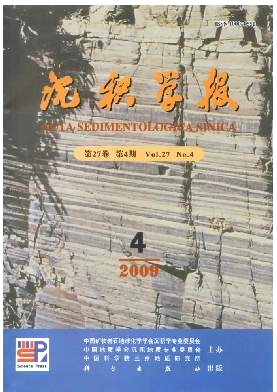Sedimentation Rates and Characteristics of Radionuclide 210Pb at the Subaqueous Delta in Changjiang EstuaryMOE
- Received Date: 1900-01-01
- Rev Recd Date: 1900-01-01
- Publish Date: 2009-08-10
-
Key words:
- sedimentation rate /
- sediment flux /
- excess 210Pb inventory /
- Changjiang estuary /
- subaqueous delta
Abstract: The 10 sediment cores were collected from subaqueous delta of Changjiang estuary in April 2006, using the gravity coring equipment. The length of the cores varied from 100 to 160cm. Following visual inspection for geological parameters and photography of the cores, they were subsampled at 2 cm intervals for the entire length of the cores. Profiles of 210Pb measured in 10 sediment cores were analyzed to elucidate the sediment rates as well as the characteristics of 210Pb. 210Pb (via 210Po) was determined by αspectrometry. Distribution of sedimentation rates reveals that during the last 100 years, the derived sedimentation rates vary from 1.36 to 4.11 cm·yr1, and generally increase seaward the 20m isobaths. In addition, the region from 122°15′E to 122°30′E, i.e. from cores SC05 to SC11, is considered as the mud depocenter in Changjiang estuary, with the mean sediment rates of 3.51cm·yr1. This pattern could coincide with the dispersal of Changjiang Riverderived sediments, with influence by the current and tidal systems. The 210Pb activities of the surfacial sediment vary from 2.15 to 4.22dpm·g1, and 210Pb deposition fluxes from 1.50 to 11.21dpm·cm2·yr1, as well as excess 210Pb inventories between >48.29 and >361.68dpm·cm2, respectively. The excess 210Pb inventories appear to be higher than the theoretical inventory at the subaqueous delta of Changjiang estuary. It is indicated that besides the atmospheric 210Pb fallout, the fluvial inputs could play an important role, whilst the much riverine sediment discharges may be scavenged and deposited at the subaqueous delta of Changjiang estuary.
| Citation: | ZHANG Rui. Sedimentation Rates and Characteristics of Radionuclide 210Pb at the Subaqueous Delta in Changjiang EstuaryMOE[J]. Acta Sedimentologica Sinica, 2009, 27(4): 704-713. |






 DownLoad:
DownLoad: